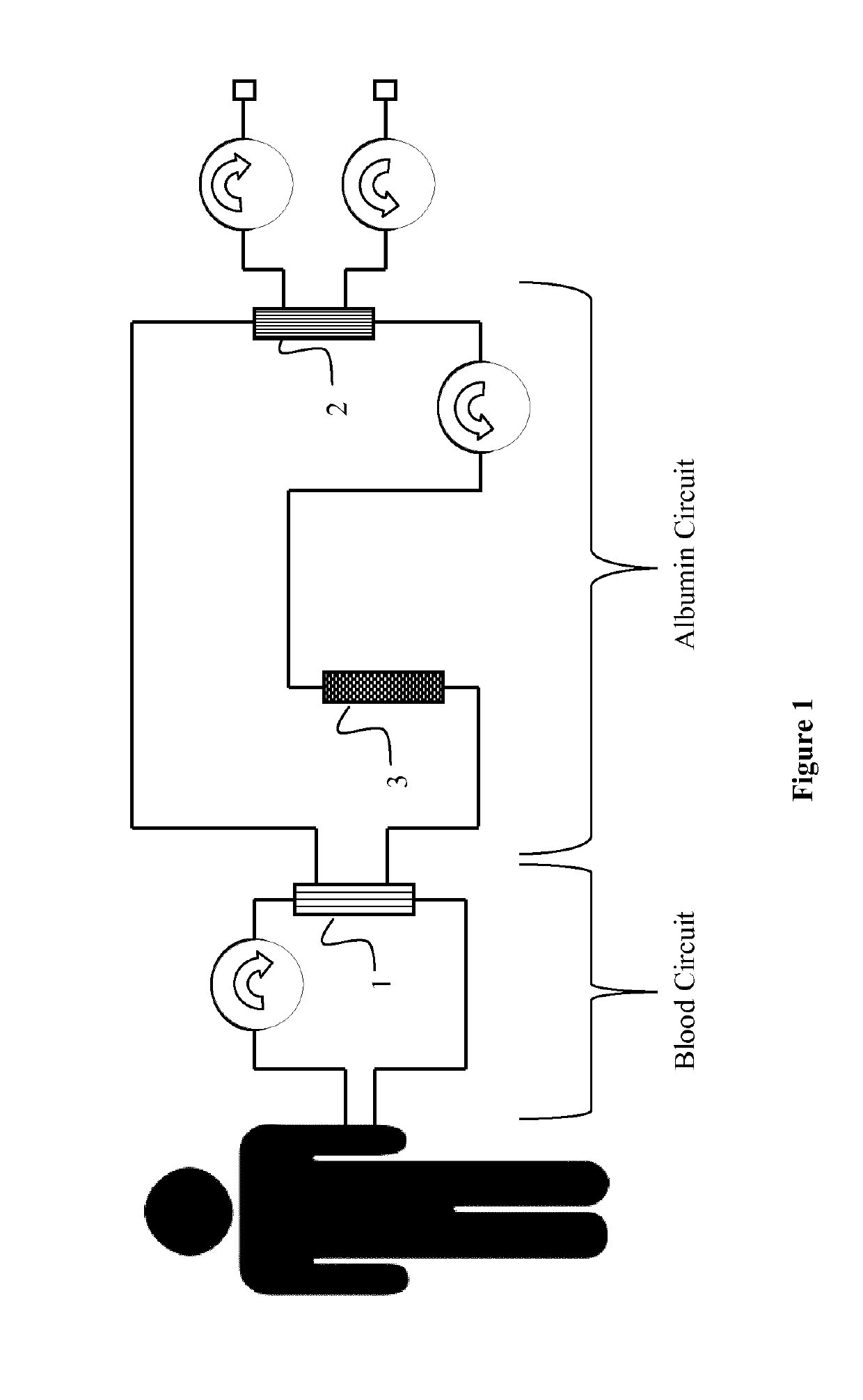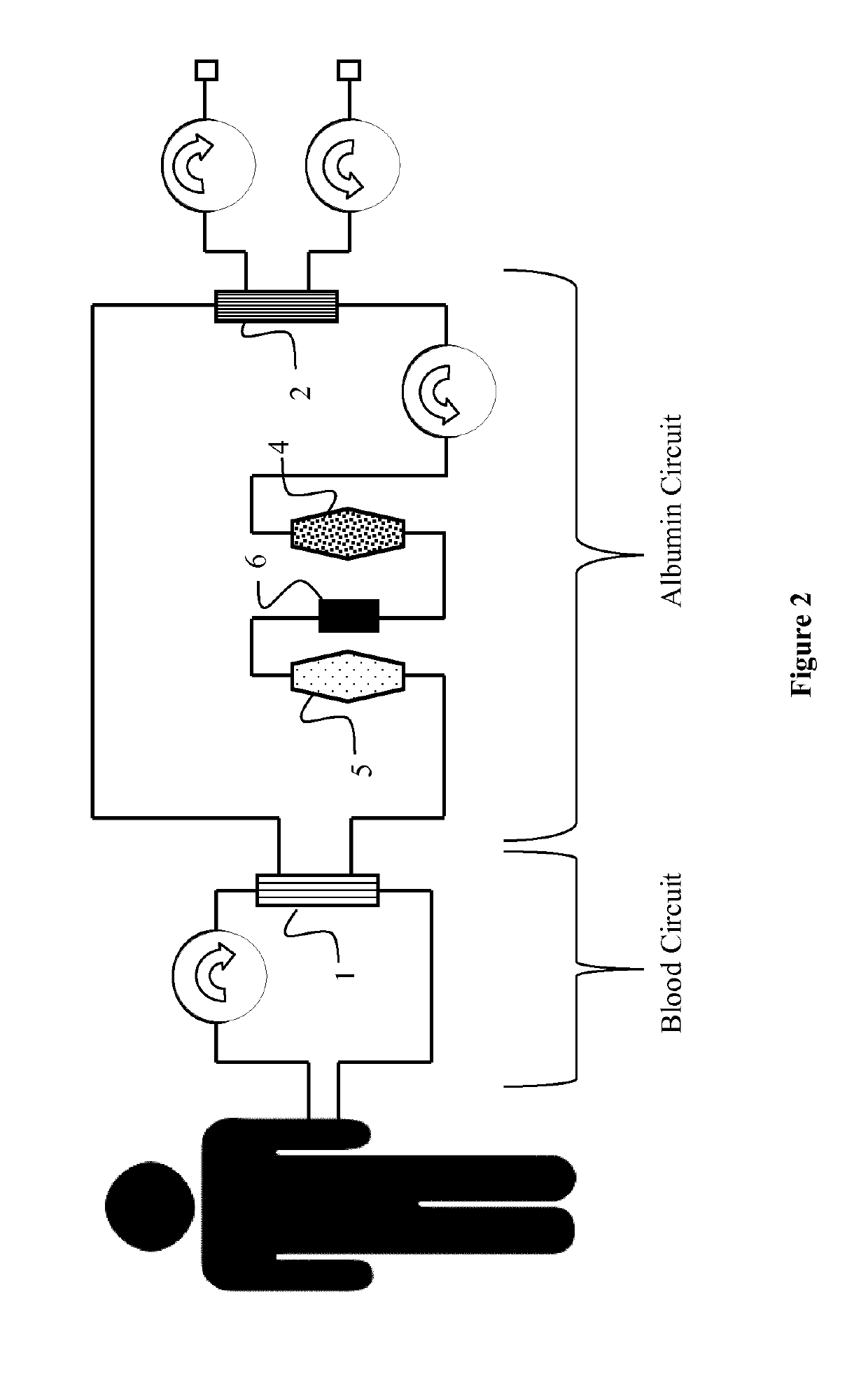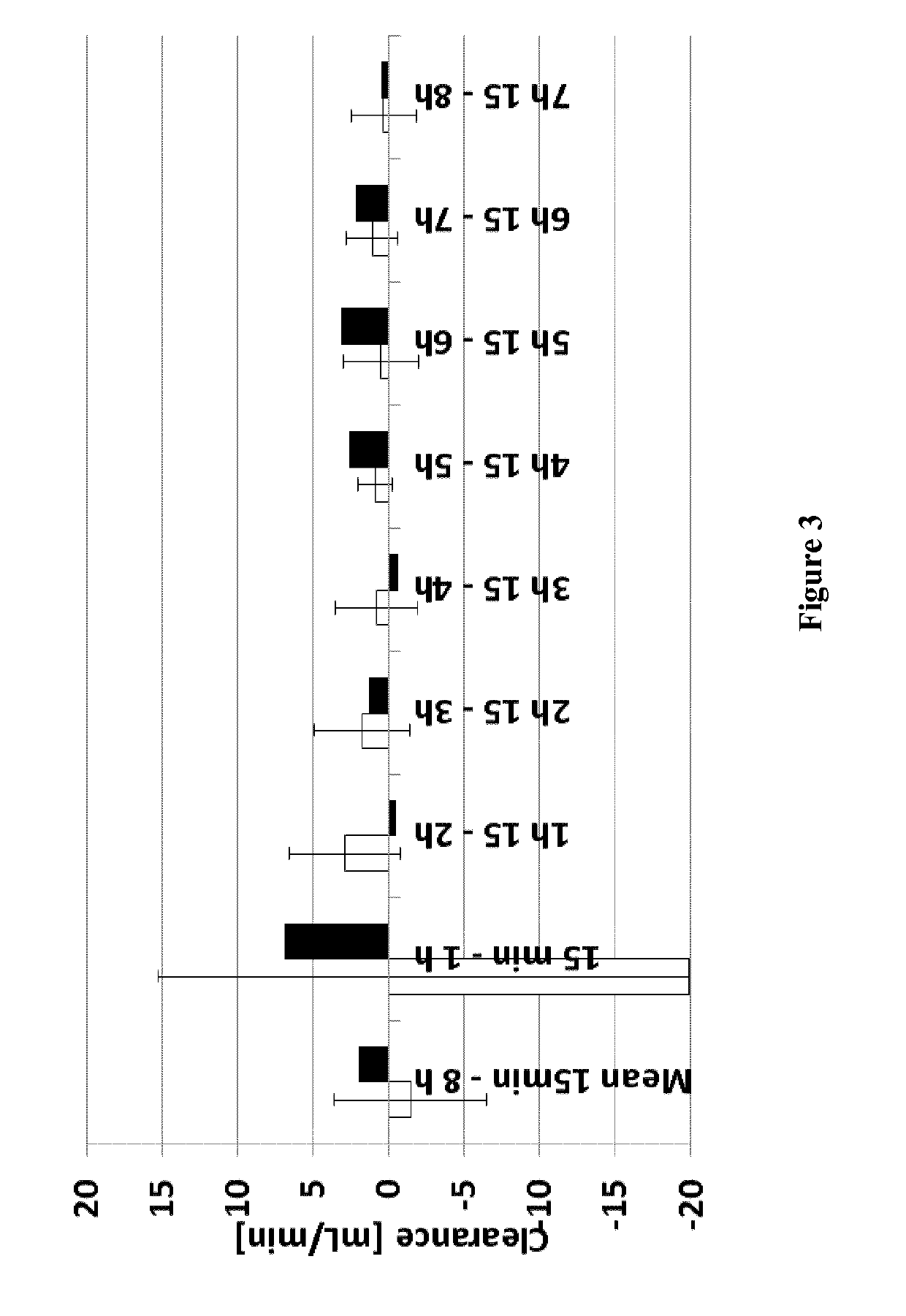Liver support system
a support system and liver technology, applied in the field of artificial and extracorporeal systems, can solve the problems of inapplicability of established methods for kidney dialysis alone to address liver failure, the accumulation of toxins not cleared by the failing liver, and the complexity of liver dialysis
- Summary
- Abstract
- Description
- Claims
- Application Information
AI Technical Summary
Benefits of technology
Problems solved by technology
Method used
Image
Examples
example 1
Preparation of a Hollow Fiber Membrane Dialyzer (3) Comprising Hollow Fibers and Particulate Material in the Filtrate Space
[0065]Standard hollow fibers were used to prepare filter modules with active particulate material on the filtrate side of the module. The housings used possess connectors at the blood side and the filtrate side according to ISO 8637:2004. The total membrane surface area was 1.7 m2. The fibers were slightly crimped. The housings had a diameter of 48 mm and a total length (effective fiber length) of 270 mm. The potting material consisted of polyurethane. The total amount of particulate material consisting of hydrophobic adsorber (Purolite) and ion exchanger (cholestyramin) which was introduced into the filtrate space was 56.07 g. The tapped densities these materials can be used to calculate the filling ratio for the modules according to DIN ISO 3953.
example 2
Removal of Liver Toxins
[0066]The liver support system according to the invention (see FIG. 1) was tested in a re-circulating test setup comprising the Prototype of Example 1 as dialyzer (3), see FIG. 1. The test pool of 3000 ml contained 75 mg / l conjugated bilirubin (Sigma) and 25 mg / l unconjugated bilirubin MW 842.9 (Calbiochem), as well as 100 mg / l chenodeoxycholic acid (CDCA) (Sigma) in Octaplas® LG human plasma (blood group 0, from Octapharma); it was kept at about 37° C. The pool further contained 5 ml heparin (Heparin-Natrium-25000-ratiopharm). 60 ml 0.1M HCl were added to reach a neutral pH. The pool was protected from light at all times. The dialyzers were connected to the machine as prescribed and run in CVVHDF mode. A blood warmer (PrismaTherm® II) was connected downstream and set to 38° C. The system was flushed with 2×21 NaCl 0.9% comprising 5000 IU / l heparin. QB=200 ml / min, QD=1.5 l / h and replacement fluid 1 l / h (total: 2.5 l / h). UF=0 l / h. The system was run for 8 h. Af...
PUM
 Login to View More
Login to View More Abstract
Description
Claims
Application Information
 Login to View More
Login to View More - R&D
- Intellectual Property
- Life Sciences
- Materials
- Tech Scout
- Unparalleled Data Quality
- Higher Quality Content
- 60% Fewer Hallucinations
Browse by: Latest US Patents, China's latest patents, Technical Efficacy Thesaurus, Application Domain, Technology Topic, Popular Technical Reports.
© 2025 PatSnap. All rights reserved.Legal|Privacy policy|Modern Slavery Act Transparency Statement|Sitemap|About US| Contact US: help@patsnap.com



